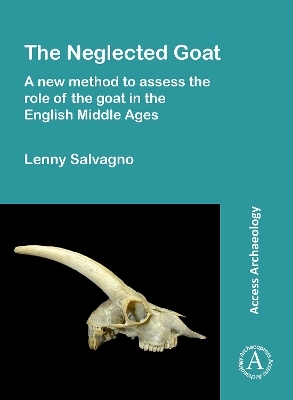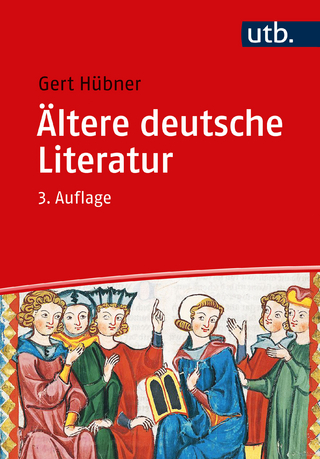
The Neglected Goat: A New Method to Assess the Role of the Goat in the English Middle Ages
Archaeopress (Verlag)
978-1-78969-629-5 (ISBN)
Distinguishing between the bones of sheep and goats is a notorious challenge in zooarchaeology. Several methods have been proposed to facilitate this task, largely based on macro-morphological traits.
This approach, which is routinely adopted by zooarchaeologists, although still valuable, has also been shown to have limitations: morphological discriminant traits can differ in different sheep/ goat populations and a correct identification is highly dependent upon experience, as well as the availability of appropriate reference collections and the degree to which a researcher is prepared to ‘risk’ an identification.
The Neglected Goat provides a new, more objective and transparent methodology, based on a combination of morphological and biometrical analyses, to distinguish between sheep and goat post cranial bones. Additionally, on the basis of the newly proposed approach, it reassesses the role of the goat in medieval England.
There are several historical and archaeological questions concerning the role of this animal that have so far remained unanswered: why is the goat commonly recorded in the Domesday Book, when it appears to be so scarce in the contemporary archaeological record? Is the goat under-represented in the archaeological record or over-represented in the Domesday Book? Why is this animal, when identified in English medieval animal bone assemblages, almost exclusively represented by horncores?
Through the investigation of a number of English sheep and goat medieval assemblages, this study sheds light on these questions, and suggests that the goat was indeed rarer than the Domesday Book suggests.
Lenny Salvagno graduated from the University of Parma (Italy) and obtained a PhD in zooarchaeology from the University of Sheffield (UK). She completed a two-year Post-Doc at Sheffield, focussing on changes in pig husbandry during the Late Medieval-Early Modern transition in England. She is now an Honorary Research Fellow at the Department of Archaeology in Sheffield and a Marie Skłodowska-Curie Post-Doctoral Fellow at the Ludwig Maximilian University in Munich (Germany).
1 INTRODUCTION AND BACKGROUND ;
1.2 TAXONOMY ;
1.3 METHODOLOGICAL BACKGROUND ;
1.4 THE MEDIEVAL ENGLISH GOAT: SETTING THE SCENE ;
2 STUDY OF THE MORPHOLOGICAL TRAITS AND BIOMETRY OF THE MODERN MATERIAL ;
2.1 METHODS ;
2.2 MATERIALS ;
2.3 INTER-OBSERVER ERROR AND INTRA-OBSERVER ERROR: CONSISTENCY TESTS ;
2.4 MORPHOLOGICAL RESULTS ;
2.5 BIOMETRIC RESULTS ;
2.6 DISCUSSION OF THE STUDY OF THE MODERN MATERIAL: MORPHOLOGICAL AND BIOMETRICAL APPROACH ;
3 RE-EVALUATION OF THE ROLE OF THE GOAT IN MEDIEVAL ENGLAND ;
3.1 THE ARCHAEOLOGICAL SITES ;
3.2 KING’S LYNN (AD 1050-1800) ;
3.3 MEDIEVAL AND POST-MEDIEVAL FLAXENGATE (C. LATE 11TH CENTURY AD; LATE 14TH - MIDDLE 16TH CENTURY AD) ;
3.4 WOOLMONGER /KINGSWELL STREET, NORTHAMPTON (C. 1000-1550 AD) ;
3.5 DISCUSSION OF THE APPLICATION OF THE NEW METHODOLOGY ON ARCHAEOLOGICAL ASSEMBLAGES ;
3.6 REASSESSMENT OF THE ROLE OF THE GOAT IN MEDIEVAL ENGLISH HUSBANDRY AND ECONOMY: A BEGINNING ;
3.7 FUTURE DEVELOPMENTS: THE WAY IS PAVED ;
4 CONCLUSIONS ;
REFERENCES ;
APPENDICES ;
APPENDIX I: THE IMPORTANCE OF THE GOAT IN THE HUMAN PAST ;
APPENDIX II: BLAND AND ALTMAN PLOTS AS INTEGRATION OF THE ICC (INTER-OBSERVER ERROR) ;
APPENDIX III: DESCRIPTIVE STATISTICS FOR THE MODEN SHEEP AND GOAT MATERIAL ;
APPENDIX IV: ASSUMPTIONS FOR DISCRIMINANT ANALYSIS (DA) AND PRINCIPAL COMPONENT ANALYSIS (PCA) ;
APPENDIX V: PCA, A BRIEF GLOSSARY ;
APPENDIX VI: DA: HOW TO USE IT TO PREDICT NEW ARCHAEOLOGICAL CASES
| Erscheinungsdatum | 08.06.2020 |
|---|---|
| Zusatzinfo | 744 figures, 351 tables (colour throughout) |
| Verlagsort | Oxford |
| Sprache | englisch |
| Maße | 203 x 276 mm |
| Gewicht | 2470 g |
| Themenwelt | Geisteswissenschaften ► Archäologie |
| Geschichte ► Allgemeine Geschichte ► Mittelalter | |
| Naturwissenschaften ► Biologie ► Zoologie | |
| ISBN-10 | 1-78969-629-1 / 1789696291 |
| ISBN-13 | 978-1-78969-629-5 / 9781789696295 |
| Zustand | Neuware |
| Haben Sie eine Frage zum Produkt? |
aus dem Bereich


